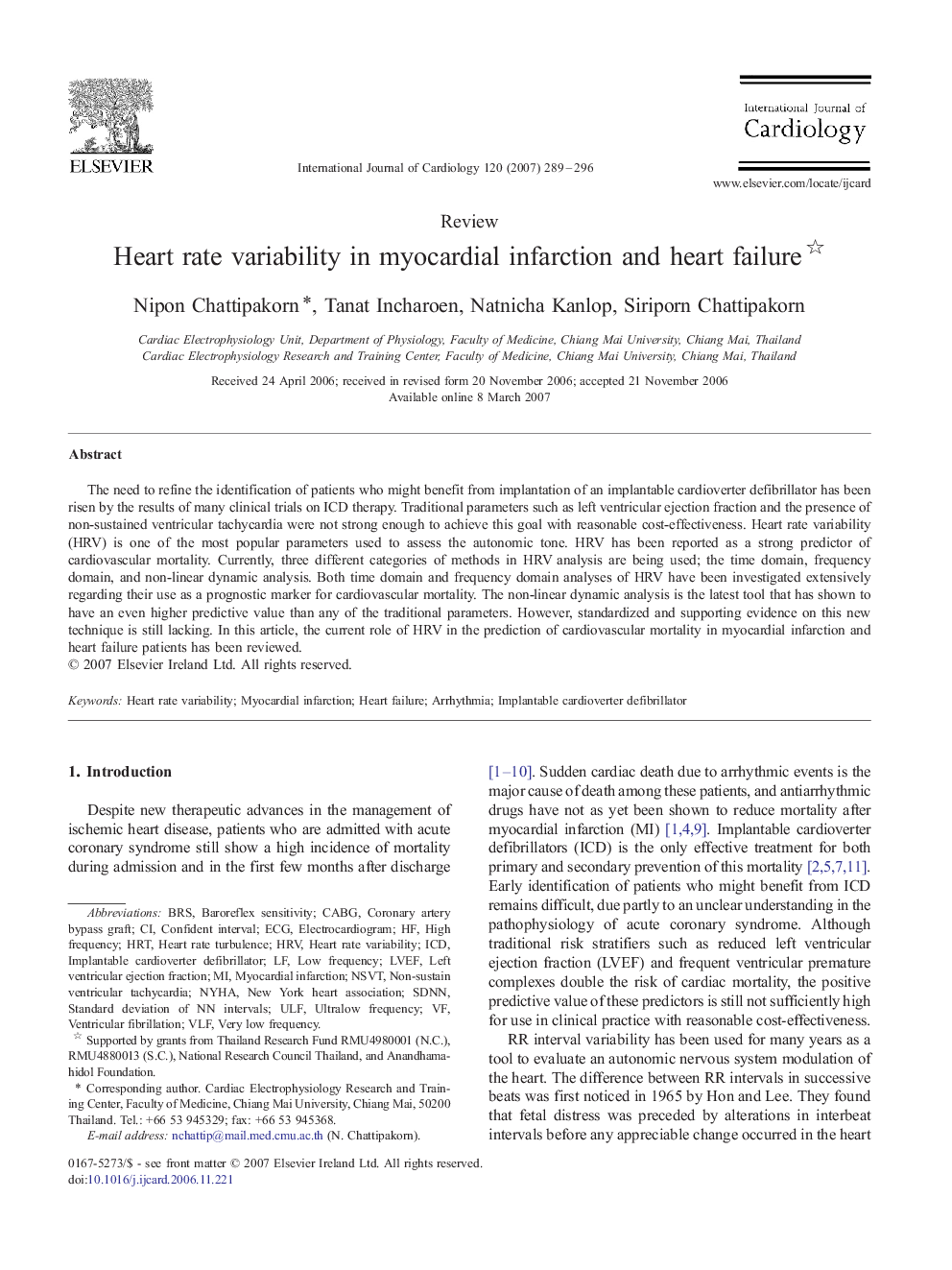| Article ID | Journal | Published Year | Pages | File Type |
|---|---|---|---|---|
| 2935916 | International Journal of Cardiology | 2007 | 8 Pages |
The need to refine the identification of patients who might benefit from implantation of an implantable cardioverter defibrillator has been risen by the results of many clinical trials on ICD therapy. Traditional parameters such as left ventricular ejection fraction and the presence of non-sustained ventricular tachycardia were not strong enough to achieve this goal with reasonable cost-effectiveness. Heart rate variability (HRV) is one of the most popular parameters used to assess the autonomic tone. HRV has been reported as a strong predictor of cardiovascular mortality. Currently, three different categories of methods in HRV analysis are being used; the time domain, frequency domain, and non-linear dynamic analysis. Both time domain and frequency domain analyses of HRV have been investigated extensively regarding their use as a prognostic marker for cardiovascular mortality. The non-linear dynamic analysis is the latest tool that has shown to have an even higher predictive value than any of the traditional parameters. However, standardized and supporting evidence on this new technique is still lacking. In this article, the current role of HRV in the prediction of cardiovascular mortality in myocardial infarction and heart failure patients has been reviewed.
